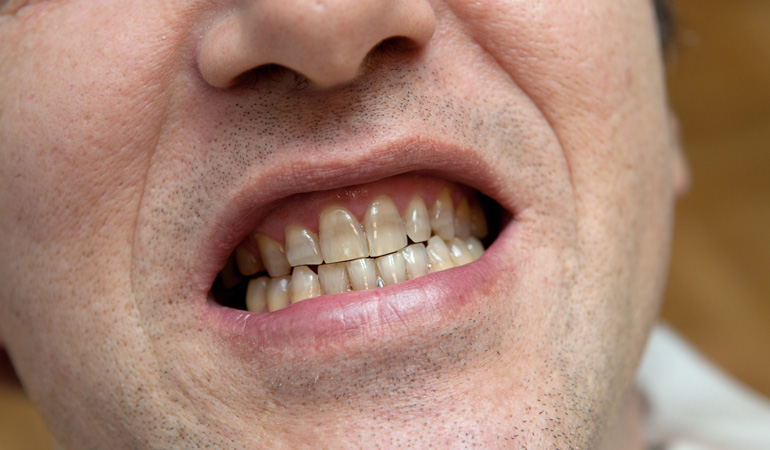Having a bright, white smile is a common goal for many people, but tooth discolouration can often stand in the way. While stained teeth are usually a cosmetic concern, they can also affect self-confidence and how others perceive us. At Weston Dental Office, we believe that understanding the causes behind tooth staining is the first step toward maintaining a healthier, whiter smile.
In this article, we’ll explore the science behind teeth staining and discolouration—what causes it, the different types of stains, and what you can do to prevent and treat them.
Types of Tooth Stains
There are two primary categories of tooth stains: extrinsic and intrinsic.
- Extrinsic Stains
Extrinsic stains occur on the outer surface of the teeth, called the enamel. These stains are often caused by external factors such as:
- Foods and beverages: Coffee, tea, red wine, cola, and deeply pigmented foods like berries or tomato sauce can gradually stain teeth.
- Tobacco use: Smoking or chewing tobacco leads to significant yellowing and brown stains due to tar and nicotine.
- Poor oral hygiene: Inadequate brushing and flossing can allow plaque and tartar buildup, which may trap stains on the tooth surface.
Because extrinsic stains affect the enamel, they are generally easier to remove with professional cleanings or whitening treatments.
- Intrinsic Stains
Intrinsic stains originate within the tooth, affecting the dentin—the layer beneath the enamel. These stains can be more difficult to treat and are often caused by:
- Trauma or injury: A blow to the tooth can damage the pulp and cause the tooth to darken.
- Medications: Some antibiotics, such as tetracycline, can cause permanent discolouration if taken during tooth development.
- Fluorosis: Excessive fluoride intake during childhood can result in white or brownish spots on the enamel.
- Tooth decay or old dental restorations: Cavities or outdated fillings can darken teeth over time.
Intrinsic stains may require advanced cosmetic treatments, such as veneers, bonding, or professional whitening to improve their appearance.
Why Do Teeth Become Discoloured Over Time?
As we age, our enamel naturally wears down, exposing more of the yellowish dentin underneath. This process makes our teeth appear darker or more yellow even if we maintain good oral hygiene. In addition, lifestyle choices and habits—like diet, smoking, and oral care—play a significant role in how quickly teeth become discoloured.
Another key factor is enamel porosity. The enamel surface is not completely smooth; it contains microscopic grooves that can trap pigments from food, drinks, or tobacco. Over time, these pigments accumulate, leading to visible stains.
How to Prevent Tooth Discolouration
While some staining is inevitable with age, there are several effective strategies to slow down the process and keep your smile bright:
- Brush and floss regularly: Proper oral hygiene removes plaque and prevents stains from setting in.
- Use whitening toothpaste: These formulas contain gentle abrasives or polishing agents that can help reduce surface stains.
- Rinse after eating or drinking: Swishing water in your mouth can help wash away staining substances before they settle into the enamel.
- Limit stain-causing foods and drinks: Try to reduce consumption of beverages like coffee, tea, and red wine—or use a straw to minimize contact with teeth.
- Quit smoking: Avoiding tobacco is one of the best things you can do for both your oral and overall health.
- Visit your dentist regularly: Professional cleanings help remove built-up plaque and tartar, which can make stains more noticeable.
Professional Solutions for Whiter Teeth
If your teeth are already stained or discoloured, there are various dental treatments that can help restore their brightness:
- In-office teeth whitening: This is one of the most effective ways to lighten extrinsic stains quickly and safely under the supervision of a dental professional.
- Take-home whitening kits: Custom-fitted trays and dentist-approved whitening gels can provide great results over a few weeks.
- Bonding or veneers: For more severe or intrinsic staining, these cosmetic treatments can improve the colour and shape of teeth for a more uniform and attractive smile.
- Enamel microabrasion: This technique can remove minor surface imperfections and shallow stains using gentle abrasion.
Our team at Weston Dental Office will help you choose the most suitable option based on the type and severity of your tooth discolouration.
Brighten Your Smile with Weston Dental Office
If you’re concerned about teeth stains or wish your smile looked brighter, you’re not alone. At Weston Dental Office, we offer personalized cosmetic dentistry solutions to help you feel confident in your smile. Whether it’s professional whitening or more advanced treatments, we’re here to guide you every step of the way.
Schedule an appointment today to learn more about your options and take the first step toward a whiter, healthier smile.



Comments are closed here.